Seed saving tips..
We've had a lot of plants go to seed in our various gardens over the past month or so & thought some folks might like a bit of a look at the seeds that have been collected.. More importantly, I would also like to pass on a few tips & information on saving seeds to those thinking about saving seeds for the first time.. All the varieties we're collecting at the moment mature on the plants & require very little processing..
To begin with, saving seeds is a very straight forward process, however a few basic guidelines need to be followed when it comes to some varieties.. This is to ensure that plants will provide seeds that will grow true to type & with vigour..
Cross breeding..
In some plant families different varieties will easily cross pollinate with others resulting in hybrid seeds that will not grow true to type (the same as the parent plants the seed came from).. If you intend on saving seeds for the next growing season, it's a good idea to only let one member of the family flower at one time.. The cucurbit family, that includes cucumber, melons, squash & pumpkin, is a great example of this with many commonly grown plants easily crossing with each other.. These plants have both male & female flowers (called imperfect flowers) & require pollen from the male flower to be delivered to the female flower.. If you are looking to save seeds from plants like this it's a good idea to either grow one variety at a time to ensure seed purity or to cover them with netting & hand pollinate until you have some fruit set that you can save seeds from for the next season.. Below is a look at how to hand pollinate the larger cucurbit flowers such as squash, pumpkins & zucchini for those that are curious..
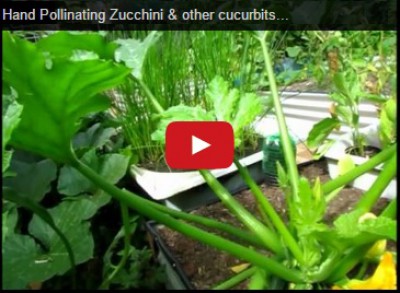
Inbreeding depression..
One other thing you need to be careful with when saving seeds from some plants is inbreeding depression.. Simply put, Inbreeding depression is where the gene pool of a given plant type is limited & mutations/lack of vigour can start to occur in subsequent generations.. There is a great PDF download from "The Siskiyou Permaculture Resource Group" that includes the amount of plants needed to be grown to prevent inbreeding depression in veggies commonly grown in backyards, as well as other information you might find useful..
Some plants like tomatoes, capsicum/peppers, cucurbits, beans, peas, lettuce & radish show no inbreeding depression & it's fine for the home gardener to save seeds from a single or small number of these plants for the next crop..
The cabbage family of plants (Brassica oleracea which includes cabbage, cauliflower, kale broccoli & Brussels sprouts) is one family we grow & is susceptible to inbreeding depression..
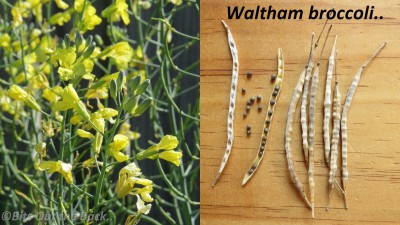
Corn is one plant that is very susceptible to this with mutations in some varieties starting to show up 2 or 3 generations down the line if insufficient number of plants are grown.. Most recommendations I've read for corn say a minimum of 200 plants to get seeds that will continue to be strong & show no defects in following generations.. Other articles I've read recommend 100 plants minimum..
Last Summer we grew 2 types of coloured corn, Aztec & Glass Gem..
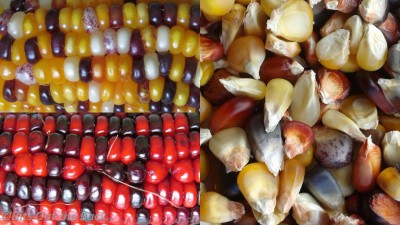
Saving the seeds..
As I mentioned before, the seeds we have been saving lately are all left to dry on the plant which makes saving them a lot faster to process than some others..

We found the best way to get these seeds to germinate was to soak them for 24-36 hours in water before planting them into small pots, where they could be kept moist until they germinated.. I don't think we will ever need to sow another seed as we now have volunteer plants popping up around the patch..
Other very easy seed to harvest would have to be those of the bean & pea families..
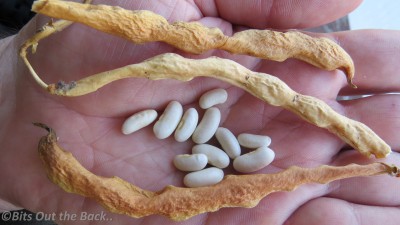
Chillies are a fruiting plant that you can let dry out on the plant & then collect the seeds after..
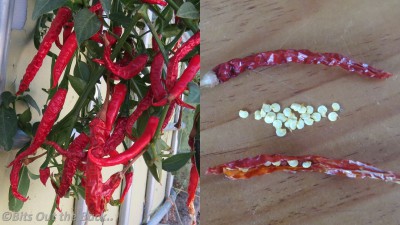

Lettuce is also a very easy plant to collect seeds from.. It is capable of self pollination & it is possible for a single plant to provide you with enough seeds for a few seasons..
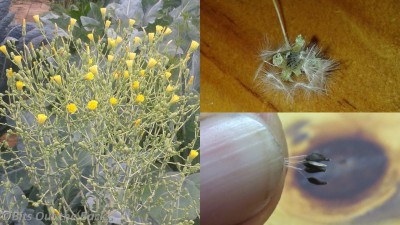
A good way to collect smaller seeds like those from the amaranth & the brassica families is to use a few basic utensils most folks have around the house.. There are a few steps involved but it doesn't take long at all..
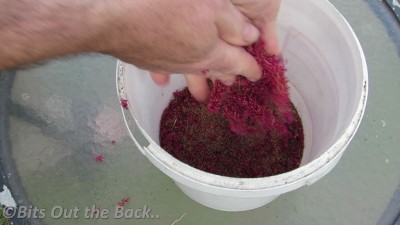
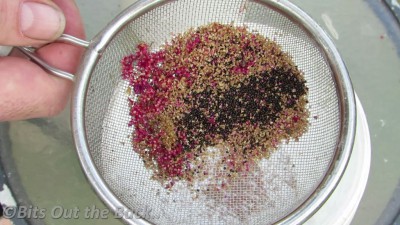
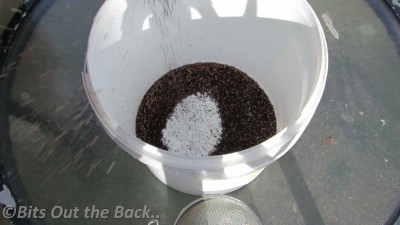
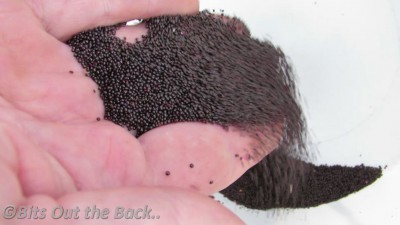
For seed storage I like to use small ziplock bags to keep the seed dry.. I try to keep all seeds from the same family in larger bags to make finding specific varieties a lot easier.. These larger bags are then stored in Bianca's old Sewing tool box & kept in the coolest spot in the house..
Types of seeds..
Just a quick word on the types of seeds you can buy & the benefits they may have..
Open pollinated seeds come from plants that have been allowed to be pollinated by natural means like wind, insects, animals or by man.. Older varieties of open pollinated seed that have a history spanning many generations are often called heirloom seeds.. Open pollinated seed are suitable for seed saving as long as precautions are made to keep different varieties from the same family isolated from each other so they don't cross pollinate..
Hybrid seeds are made from a cross of 2 different plants of the same variety to produce an offspring that will have genetic characteristics of both its parents.. These are called F1 varieties.. Some F1 plants are developed to provide an increase yield in faster time than their parents (often called hybrid vigour).. Other reasons for creating these F1's is so plants can tolerate extremes in climate, uniformity of shape/quality & the ability for all plants in a crop to become ready for harvest at the same time..
One type of F1 fruit I'm interested in growing this season are parthenocarpic cucumbers.. Parthenocarpic plants are able to produce fruit without the need for pollination & can often turn up in nature as a mutation all by themselves.. I think these cucumbers would be great to grow in the hoop house where there are few pollinating insects.. Due to the Queensland fruit fly many fruiting plants need to be grown under protection here..
The big downfall of F1 hybrid plants is that the seeds generally will not grow offspring that are true to type.. Some plant breeders have persisted & stabilised some hybrid varieties but it can take many generations & a lot of dedication.. I have spoken to a few folks that have breed their own tomato varieties this way.. I was lucky enough to be able to purchase some seeds & am looking forward to growing these dwarf varieties to see how they go here..
GMO or Transgenic seeds, are a different kettle of fish altogether.. These seeds are created by taking genes from one species & placing them into a different one to provide them with herbicide resistance (Roundup ready Canola), toxic properties that will kill pest insects (BT Corn), fortify with vitamins (Golden rice) or even just to produce a uniquely different colour flower like the blue rose..
The main reason I am mentioning them is that they are not available to the home gardener here in Australia & many other countries, contrary to little info graphics posted on some social media sites.. If you are interested in saving seeds from store bought produce here in Australia you don't need to worry about GMO produce either.. All produce that is a "GMO" needs to be signed as such & I am yet to see any make an appearance.. You can also check out what varieties are approved to be grown here on the "Current GM Applications & Approvals" page on the Food Standards Australia New Zealand (FSANZ) website..
A small update on the patch..
We are going through a bit of a transition period in the patch at the moment with the warmer weather arriving here in South East Queensland.. We have had a few days on or above 40°C already, yet the garden has pulled through with flying colours & next to no wilt whatsoever.. We owe much of that to growing in the wicking garden beds I think..
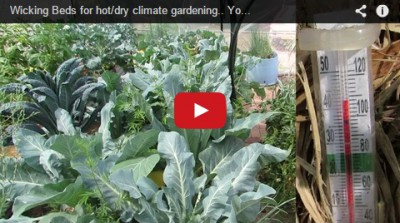
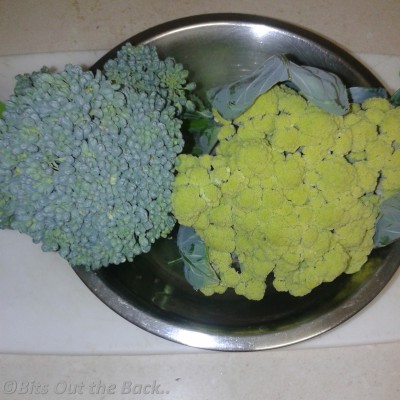
One of our long awaited harvest this Spring was the blueberries..

Eggplants & okra have also started to provide us with lots of fruit..
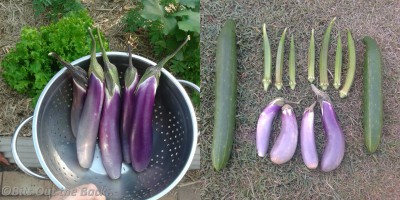
A few of the other plants that have been providing us with meals are the cucumbers & Okinawan spinach..
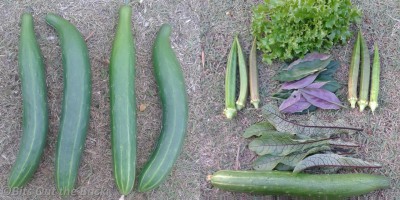
That's about it for this month's instalment.. Hope the seed saving tips help a few folks out..
Cheers all & have fun in the patch,
Rob..

